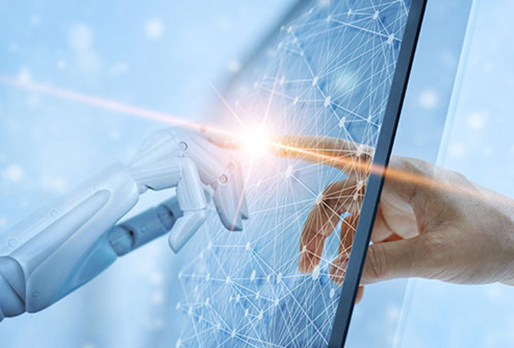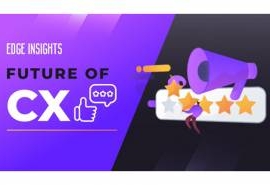The world of work is changing. Globalisation, Digitalisation and other mega-trends are bringing radical shifts to how we live and work. Artificial Intelligence, Automation, and Robotics will make this shift as significant as the mechanization in prior generations of agriculture and manufacturing. These changes raise essential questions around the skills we need for future jobs, the quality of those jobs, the support available if we're unable to work or if we retire, and what voice we have in shaping these outcomes. How can organizational leaders prepare for a future that few of us can define? How will talent management change? What does all this mean for businesses and HR?
The question is not about the opportunity to make the change happen, rather the imminent question is are we ready for the change?
Thanks to the pandemic, it has accelerated the whole process and pushed organisations on this journey. Organizations, did take fast action to protect their workers’ health and safety, establish essential services, and deploy workforce strategies to support workers in real time. And ecosystems banded together to leverage their collective and complementary capabilities to effect meaningful change.
Time to Build the Roadmap of Tomorrow
Make your inbox more interesting.
Subscribe to our newsletter.Now that most companies have responded to the crisis, they are in the process of drafting their plans along two fulcrums, namely; how to get back to work as well as how to work in the new normal. One needs to be cognizant of the fact that the pandemic will only go away gradually and not as suddenly as it had shown up on the world map. The how-to-work bit is more tricky than it seems. It encompasses the changing landscape of work itself, the workforce and the workplace.
Organisations that quickly reanalyse and remodel themselves to cater to the fast-changing socio-economic environment will stand a greater chance at succeeding. It is certain that the online world will be forever refined and reshaped by consumer behaviour. Technology will be further used to refine supply chain, production, and operational controls. Some of the defining pillars basis which the new draft should be executed are:-
- Emergence of globally distributed teams
- Connected workforce
- Democratised learning
- Flatter structures
- Innovation anywhere
- Faster adaption to change
Technology - The Catalyst of the Future
Work technologies will be pivotal to lay the foundation of the new landscape. The future will be driven by the convergence of technologies like artificial intelligence, robotics and data analytics, however not losing sight of security amidst all of this. Advanced workplace technologies will support networked, agile, open, secured and transparent frameworks.
Organizations should evolve their thinking about technology from taking a pure substitution view (replacing humans with technology) to using technology as an augmentation or collaboration strategy. The latter view can allow organizations to not only streamline costs but to also create value and ultimately, provide meaning to the workforce as a whole. The health crisis gave people a greater appreciation for the fact that humans and technology are more powerful together than either can be on their own. Consider how telemedicine, manufacturing, education, and even grocery delivery drew on the power of integrated human-machine teams during the crisis.
As per SalesEdge, India’s only growth intelligence platform, enterprises are expected to spend $1.6 bn on Artificial Intelligence, another $1.6 bn on Enterprise Mobility, and nearly $1 bn on Next-Gen Security. The already looming slowdown of the markets coupled with the pandemic as pushed Workforce optimisation and increased productivity to the top three priorities of organisations collectively across all verticals.

Effective Workplace and Workforce Management – Driving Larger Business Imperatives
Many enterprises are beginning to embrace the idea that changes in the work environment are critical to the recruitment, retention, and engagement of top talent. Furthermore, these changes can significantly improve other business imperatives such as productivity, cost control, and innovation. These are powerful and often disruptive changes that are not restricted to the workplace, or the workforce; instead, they cross the boundaries of work, home, and travel and they impact employees, contractors, partners, customers, and more.
Simultaneously, talent remains the biggest differentiator for companies as they compete for market share, customers, capital amongst others. One of the biggest challenges for enterprises is to bring in the right set of talent and manage them as they build the business. Additionally, the COVID-19 situation has presented with the challenge of keeping existing teams engaged, preparing for everyday changing business scenarios and building for the future. To meet this challenge, companies should craft a talent strategy that develops employees’ critical digital and cognitive capabilities, their social and emotional skills, and their adaptability and resilience. Now is the time for companies to double down on their learning budgets and commit to reskilling. Developing this muscle will also strengthen companies for future disruptions.
Organisational Culture – The Nucleus of Organisational Success
Firms need to create practical use cases for digital tools that improve daily work activities, not add more complexity or stress to a workday. This requires a focus not just on the capabilities, but also on employee mindset and alignment across the organization. This means considering the employee point of view about digital tools. Greater attention required to be given to the ties that bind people together. There is a need to pay heed to the core aspects of leadership.
Further, while devising the new workforce models one needs to identify which problem they are trying to solve? Is it a real-estate cost? Employee productivity? Access to talent? The employee experience? All of these are worthy goals, but in practice, it can be difficult to optimize one without considering its effect on the others.
Also, employees must be emotionally ready to break from tradition, and traditional processes, to use new tools. Developing the correct mindset and culture change is critical. Companies must have the mindset to make the necessary changes to their strategy, governance, structure, and historic approach to engage today’s digital employee. Not everyone is going to be comfortable at first. Creating a supportive environment is crucial to adoption. Senior leaders must serve as role models and use digital tools themselves and lead the cultural change from the front.
Through the series of articles following this, we shall dwell deeper into some of these aspects of the changing tapestry of the Future of Workforce and generate insights.
Author: Sumedha Bose, Senior Research Manager, TechCircle (Mosaic Digital)


